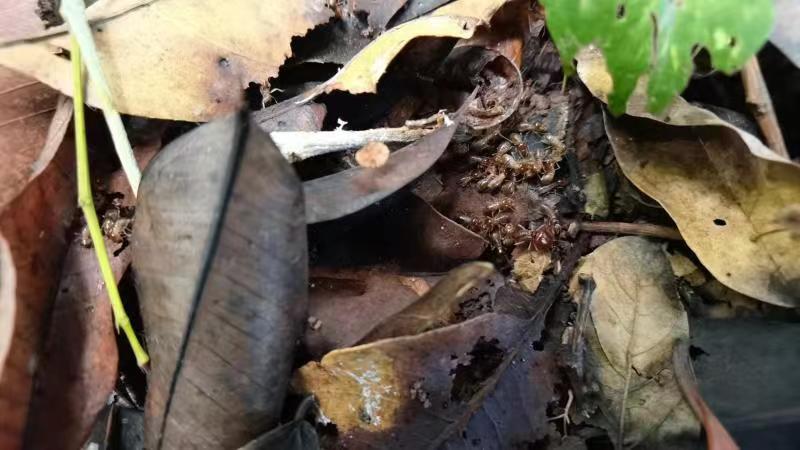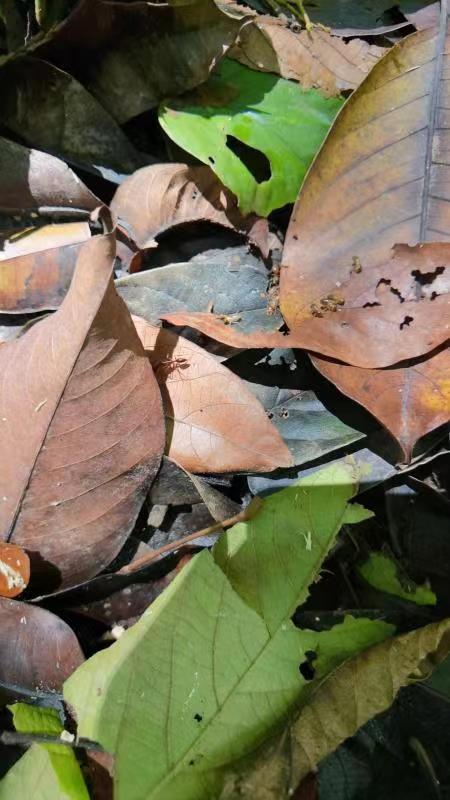Soil fauna plays an essential role in litter decomposition and their effect on single species litter decomposition has been widely studied. Compared to the separate effects of litter mixing and soil fauna on decomposition, the interactions between litter diversity and soil fauna on litter decomposition have remained even more elusive.
To address the research gap, researchers from Xishuangbanna Tropical Botanical Garden (XTBG) and Wuhan Botanical Garden (WBG) carried out a common garden litter decomposition experiment examining the combined effect of litter species diversity (in short: litter diversity) and soil fauna of different size classes on litter decomposition in the early phase of decomposition. They tried to answer whether and how the decomposition rates depend on the interactions between litter mixture species composition and soil fauna having access (categorized by size).
Through a 16-month long common garden litter decomposition experiment, the researchers tested the interaction effects using litterbags of three mesh sizes (micromesh, mesomesh, and macromesh) to disentangle the contributions of different fauna groups categorized by their size at Wuhan botanical garden (subtropical climate).
They demonstrated that soil fauna accelerated the rate of litter decomposition over sixteen months for both single species litter and litter mixtures. Litter mass loss was higher in litterbags that allowed meso- and macrofauna access regardless of litter types (single species or multiple species mixtures). Species richness had no significant effect on litter mass loss.
Furthermore, the interaction between species richness and soil fauna was not significant in modulating litter mass loss in the mixture. Mixing leaf litters from different species resulted in an overall accelerated decomposition rate. The litter mixture effect was reduced as decomposition duration progressed and varied with the mesh size throughout the decomposition period.
“Our results emphasize the importance of soil fauna, decomposition duration and their interactions in shaping litter mixtures decomposition outcomes,” said Gbadamassi Dossa of XTBG.
The study was supported by many research grants including the National Natural Science Foundation of China and published in Science of The Total Environment.
Contact
Gbadamassi Dossa Ph.D
Key Laboratory of Tropical Forest Ecology, Xishuangbanna Tropical Botanical Garden, Chinese Academy of Sciences, Mengla, Yunnan 666303, China
E-mail: dossa@xtbg.org.cn

Soil fauna contributes to litter decomposition. (Image by Gbadamassi Dossa)

Soil fauna contributes to litter decomposition. (Image by Gbadamassi Dossa)


